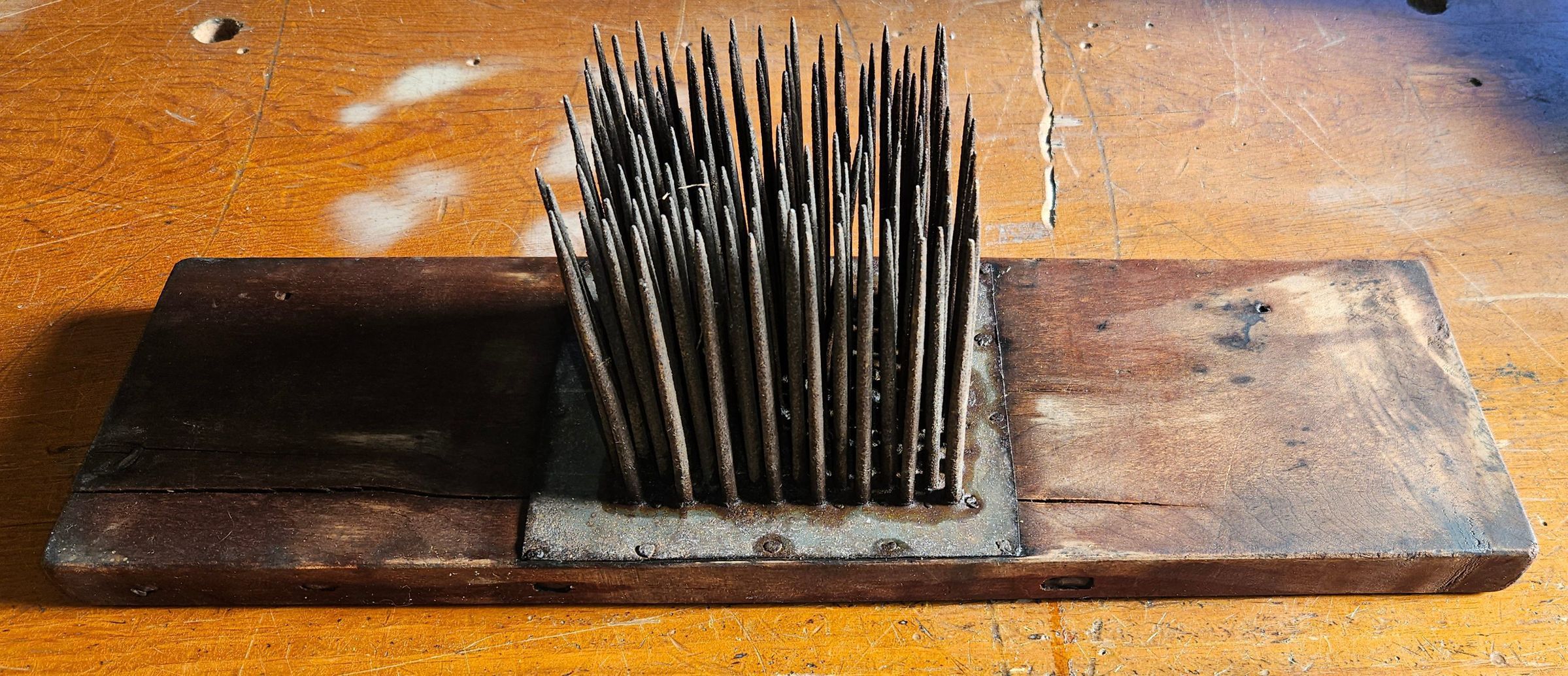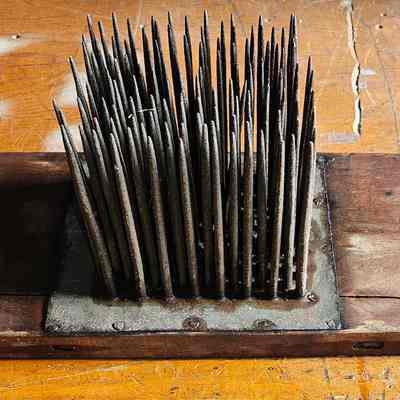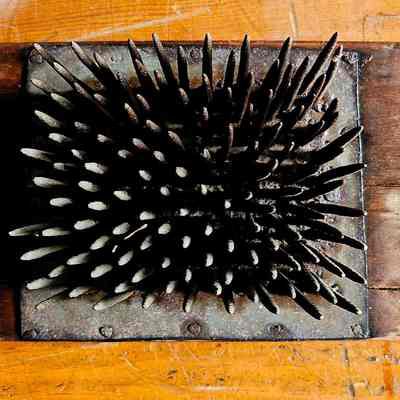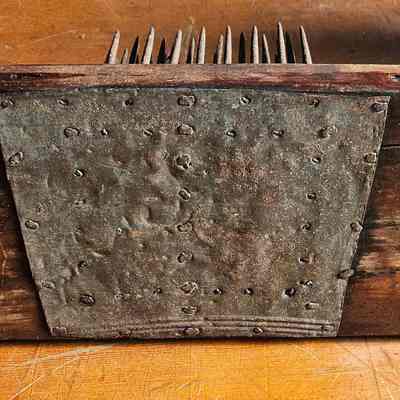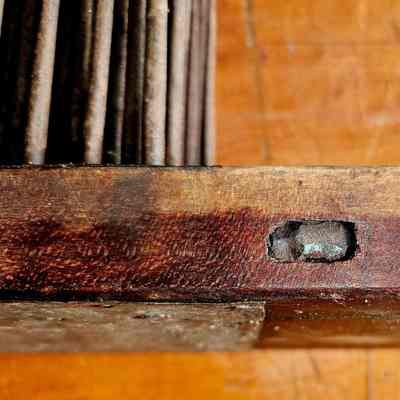Name/Title
HetchelEntry/Object ID
2024.75.01Description
Hetchel (a.k.a, hatchel, hackle). It has a heavy wooden base of hardwood, possibly maple. The tines were made of iron, as are several nails used to repair the base at some point when it had split. The sheet metal used to hold the tines in place is unusual, not found on most hetchels; it is possibly tin or iron.Use
A hetchel, hatchel, hackle, or flax comb is a preindustrial tool used for separating flax fibers. Flax has fibers in it’s stem. Users draw the stems through the hetchel to separate out the fibers. Once the fibers are separated from the rest of the stems, they could be pulled through the tines (iron spikes or pins) of even finer hetchels, to make the fibers themselves finer. Depending on the fineness desired, the fibers could be pulled through a succession of hetchels, with ever smaller, finer tines. This hetchel has large tines and thus is designed to be used in the early stages of the process of separating the fibers from the rest of the stems.Context
The many different tools used in preindustrial textile manufacturing illustrate the nature of hand and home production. Preindustrial textile production was arduous and time-consuming, with many steps and tools that had to be mastered.Collection
General CollectionLexicon
Nomenclature 4.0
Nomenclature Secondary Object Term
HatchelNomenclature Primary Object Term
Comb, TextileNomenclature Sub-Class
Textile Manufacturing EquipmentNomenclature Class
Textileworking T&ENomenclature Category
Category 04: Tools & Equipment for MaterialsDimensions
Height
6 inWidth
6 inLength
20 inMaterials
Material
Wood, IronMaterial Notes
Wood is possibly maple. Sheeting is possibly tin or iron.Location
Location
Exhibit Room
Thread Mill Square* Untyped Location
Main Museum BuildingCategory
ExhibitDate
December 15, 2024Condition
Overall Condition
GoodDate Examined
Dec 15, 2024Examined By
Eves, J.Cleanliness
Cleaned by staff during processing. Warm water with Murphy's Oil Soap.Created By
historian@millmuseum.orgCreate Date
December 15, 2024Updated By
historian@millmuseum.orgUpdate Date
December 15, 2024